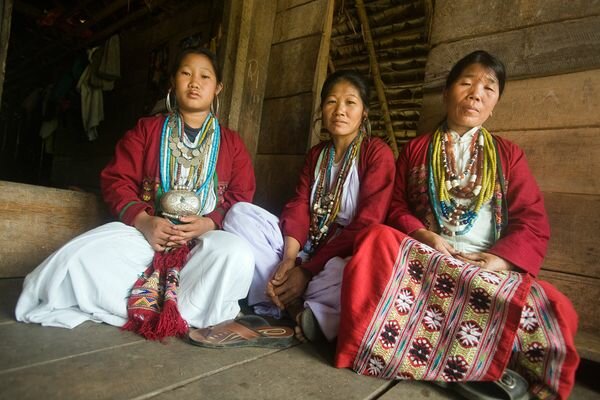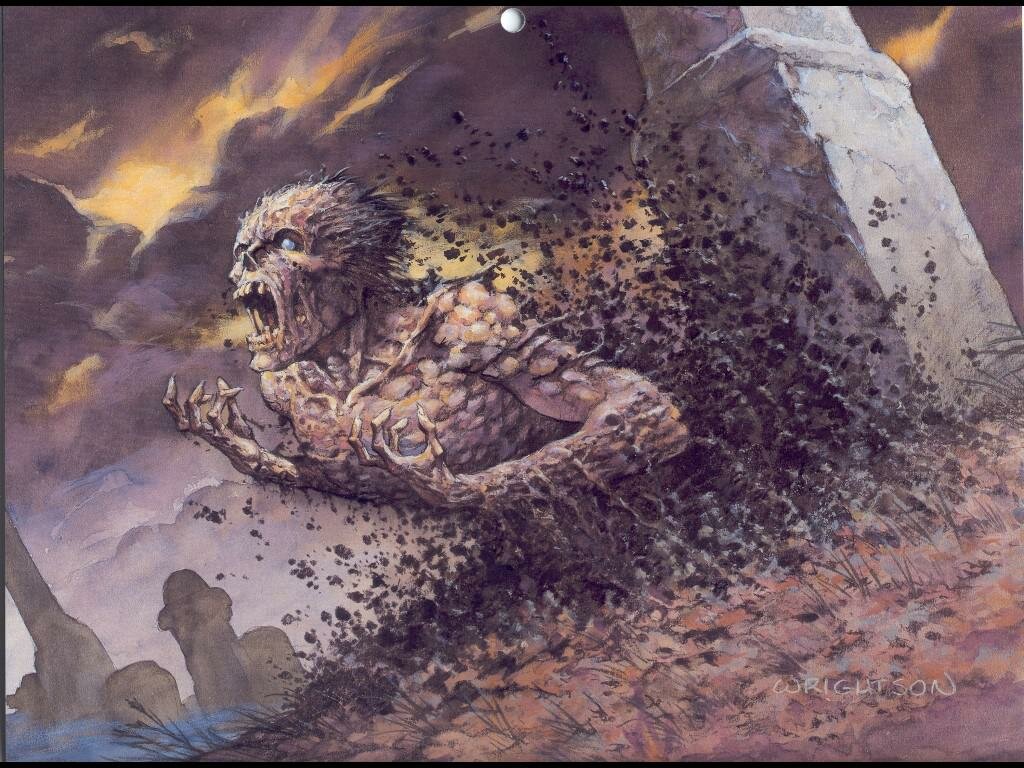Top 10 Undocumented Languages
Suggested by SMSThere is no single definition of what constitutes a “documented” language. It’s not as precise as “extinct” (a language that no longer has any speakers), “dead” (no longer spoken by anyone as their main language or has lost all its native speakers), “moribund” (has reached a reduced stage of use), or “endangered” (at risk of falling out of use). There are also several “unattested” languages, whose existence cannot be proved—they’ve only been mentioned in historical documents or have a few names or words recorded. Nevertheless, most documented languages at least have a dictionary, a book on the grammar, and a collection of texts with translations. Documented languages can be revived, the most famous example being Hebrew. Most of the world’s least documented languages are spoken in Papua New Guinea, home to over 850 indigenous languages. Here’s a wee smattering of the rest of the world’s undocumented languages.
10. Koro
At a time when a language dies every two weeks, the discovery of a new one is startling. Spoken by about 1,000 people in India’s Arunachal Pradesh state, Kono has received a lot of media coverage. Koro speakers insist that they’re part of the Aka community—intermarrying, sharing traditions, eating the same food—but strangely, they’ve managed to preserve their own distinct tongue. As researcher David Harrison put it, “There’s a sort of a cultural invisibility; they’re culturally identical…. They just happen to have a different word for everything”.
9. Arem

The Arem people have lost their own script. Now numbering 600, there are only 40 speakers of the language left in the border area between Laos and Vietnam. Fifty years ago, they were reportedly forced to move into government relocation centers, leaving their caves and temporary tree dwellings in the forest. The Arem language, which has been likened to a living laboratory of ancient Vietnamese, has gradually been absorbed into the broader Chut language family. Arem people prefer their children to be girls. As a dowry, the groom must to bring five jars of wine, ten bars of sliver, two cocks, and a large sum of money to his bride’s family. If he later does something to anger his spouse, he must bring another three jars of wine, three cocks, and another huge lump of cash to ask forgiveness. In the first place, however, every newborn must survive being dunked under water three times.
8. Gorgotoqui

An extinct language of the Chiquitanía region of the eastern Bolivian lowlands, Gorgotoqui once thrived in the colonial era. The first Jesuit missionaries arrived in what is now Bolivia (known then as Upper Peru) in 1572, and they made it the lingua franca and the sole language of the Jesuit mission. The Jesuits amalgamated different indigenous groups in the 17th Century, calling them the Chiquitano people. Chiquitos means “little ones” in Spanish—the Conquistadores had found the doors of the indigenous huts in the region small. A grammar of the language was written by a Father Ruíz (Gonzales de Barcía, 1737-38). Sadly, no one has been able to find this record.
7. Jarawa

It is a language no one else in the world knows, and none of its speakers know any other language. Jarawa, also the name for the pre-literate tribe of less than 300 living in the jungles of the middle and southern parts of Great Andaman Island in the Indian Ocean, are nomadic hunter-gatherers and subsist on tubers, animals, and fish available in the forest and sea. The name Jarawa was given to this tribe by the Great Andamanese—it means “strangers” in one of the ten languages once spoken.
Pramod Kumar has been working on a grammar of this script-less idiom, and Juliette Blevins has reconstructed a proto-language of Jarawa and its relative Onge, arguing that it may be related to Proto-Austronesian (PAN). Feared by non-Jarawa for their hostile attitude, the Jarawa were isolated until the mid-1990s. They’re now threatened by poachers and diseases like measles. Still, according to Kumar, they do not even understand the value of money. A 10 rupee-note and a 1,000 rupee-note are the same for them.
6. Amurdag

Throughout Aboriginal Australia, speaking the appropriate local language is a passport, signaling you as someone with the right to be there—to both people and the spirits of the land. In Amurdag (Amarag, Amurdak), the word for “west” is the phrase “sun go down”. “Jura” reportedly can be used to say paper, book, and office. Once reported as extinct, Australian linguists Robert Handelsmann, Nick Evans, Bruce Birch and others had been working with “last speaker” Charlie Mungulda and another remaining speaker over the years before Greg Anderson and David Harrison interviewed him for National Geographic’s Enduring Voices Project. Among other stories, he recounted the Dreamtime myth of the Rainbow Serpent, a bringer of life and death simultaneously.
5. Ayapaneco

It’s name is True Voice. Manuel Segovia, 75, and Isidro Velazquez, 69, who live in the same village of Ayapa in Mexico’s southern state of Tabasco are the last speakers of Nuumte Oote. The fact that they refuse to speak to each other is less at fault for the demise of the language than the once commonly enforced policy of explicitly prohibiting indigenous children from speaking anything but the colonial language. Mexico has 68 different indigenous languages, further divided into 364 variations. A handful of other languages are also endangered. Daniel Suslak, a linguistic anthropologist from Indiana University, has been working on a dictionary of Ayapaneco. A linguistic island encircled by much stronger indigenous languages, Nuumte Oote is especially rich in expressions inspired by nature. Kolo-golo-nay means as “to gobble like a turkey”.
4. Mortlockese
If you find yourself stranded on an island or atoll south of Truk—Etal, Lukunor, Satawan, Namoluk, Nama, and Losap—knowledge of Mortockese might come in handy. Mortlockese is a Micronesian language primarily spoken by approximately 9,000 people. It has been considered to be dialect of Chuukese (also called Trukese), but its phonology and morphology, as well as some of its lexicon, are different enough to warrant separate treatment. Chuukese is the official language of Chuuk State and has more than 60,000 speakers, and more importantly, is the language of instruction in Mortlockese schools. European and American ships began to stop at the islets to trade and rest starting in the early 1800s. Since then, Spanish, German, Japanese, and American administrations have controlled the region, the latter having the most marked impact. The community has usually seen outsiders not as invading enemies but as bearers of new resources. Unsurprisingly, the Mortlockese word for “snow” is sno.
3. Telhueche

The Welsh were not the first inhabitants of Patagonia. Among the indigenous tribes that had lived on the Patagonian plains for centuries were the “Tehuelche”, a nomadic tribe originating from the area between the River Negro and the Strait of Magellan. Their language is nearly extinct, other indigenous languages edging out Telhueche since the expansion of Mapuche culture between 1550 and 1850. The Telhueche were unusually tall and survived by hunting the guanaco (similar to the llama) and the rhea (similar to the ostrich). They most used the bow and arrow and boleadores, a weapon which had three stone balls tied to three leather cords. When thrown, the weight of the balls would tie the cord around legs of the animal and capture it. The Tehuelche relished the settlers’ bread and would often go from house to house to plead with them to exchange bread for meat. The word “bara” (Welsh for bread) was widely used by the native Patagonians. In fact, many of the Tehuelche learned some Welsh, and there is record of their descendants competing in the annual Eisteddfod in Trelew.
2. Ter Sami

Sami (Sámi, Saami) are the arctic indigenous people inhabiting parts of Sweden, Norway, Finland and the Kola Peninsula of Russia. There are two extinct Sami languages, and Ter Sami is on its way out. The Sami languages are relatively closely related but not mutually intelligible. Southern Sami speakers cannot understand their Northern Sami counterparts. The Sami languages belong to the Finno-Ugric branch of the Uralic language family, and so are related to Finnish, Estonian, and Hungarian. There are no educational materials in Ter Sami, and while text specimens, audio recordings, and dictionaries exist, no grammatical description is available. In Russia, the Kildin Sami language—the one that dominates the Kola Peninsula— is taught at the school from grades one to four. On the whole, life as a Russian Sami is hard and relatively short, with alcoholism prevalent. Here is a surviving figment of Ter Sami:

1. Mashco-Piro

A language cannot be documented by outsiders if the people who speak it cannot be contacted. The Mashco-Piro are one of the 11 indigenous peoples who have lived in voluntary isolation (“uncontacted people”) in the Peruvian Amazon since the late 19th and early 20th centuries. Mashco, which means ”naked,” is the name given by other indigenous communities. The Mashco-Piro language is frequently confused with the much more commonly-spoken Yine and Machinere languages because members of all three groups are generically referred to as “Piro” and because the identifier “Mashco” has been rejected as derogatory by many Piro speakers. Of all the indigenous peoples in Alto Purus, the Mashco-Piro are the least known. There are no reliable data on their population— the estimate is around 800. Due to the logging activity in the region, their gathering, hunting, and fishing activities are declining. The Peruvian government is trying to establish a reserve exclusively for them. Interaction with outsiders, however, is of major concern due to the Mashco-Piro’s poor immune defense capacity.











